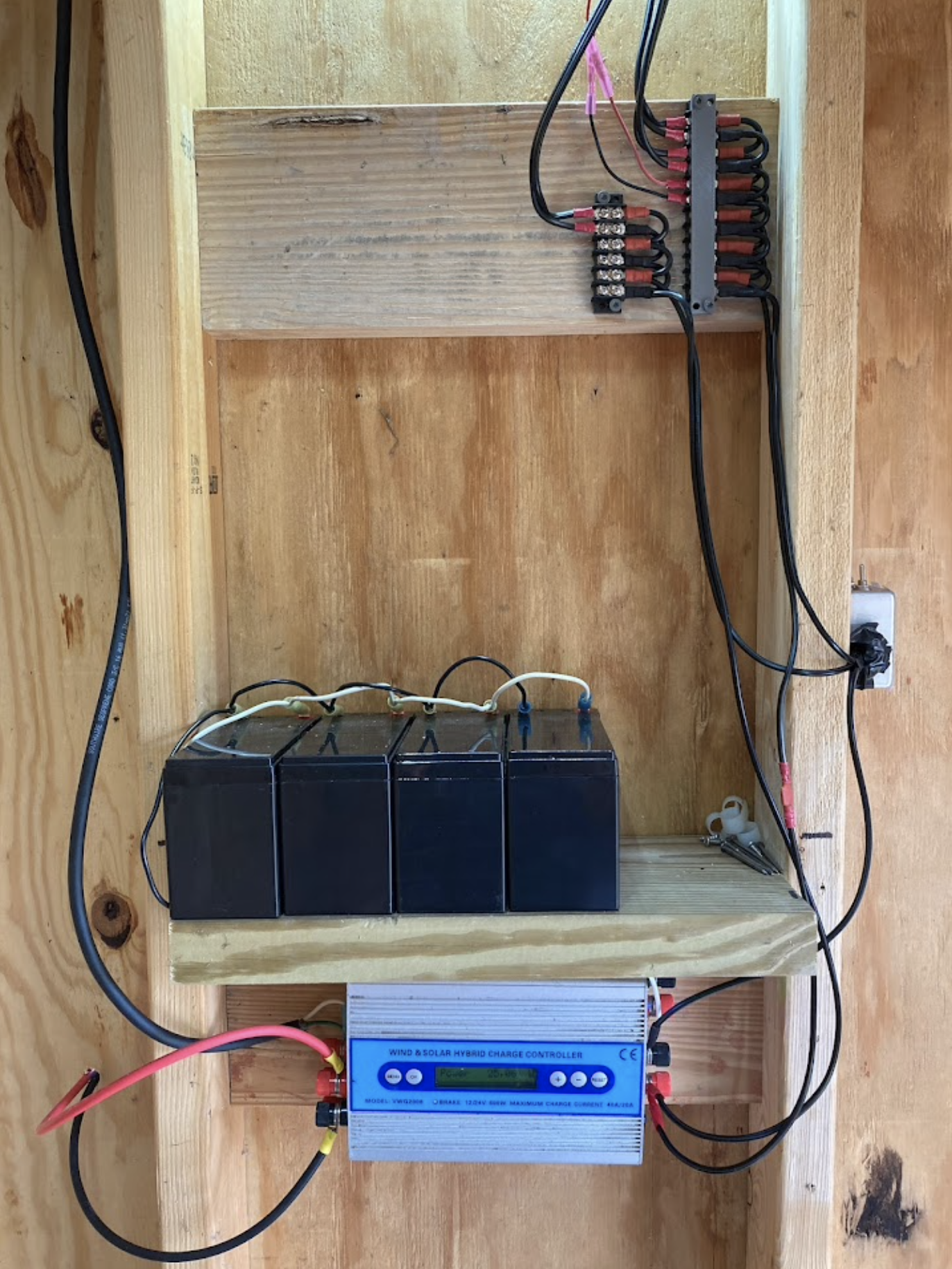Solar Collectors
Background

Solar collectors
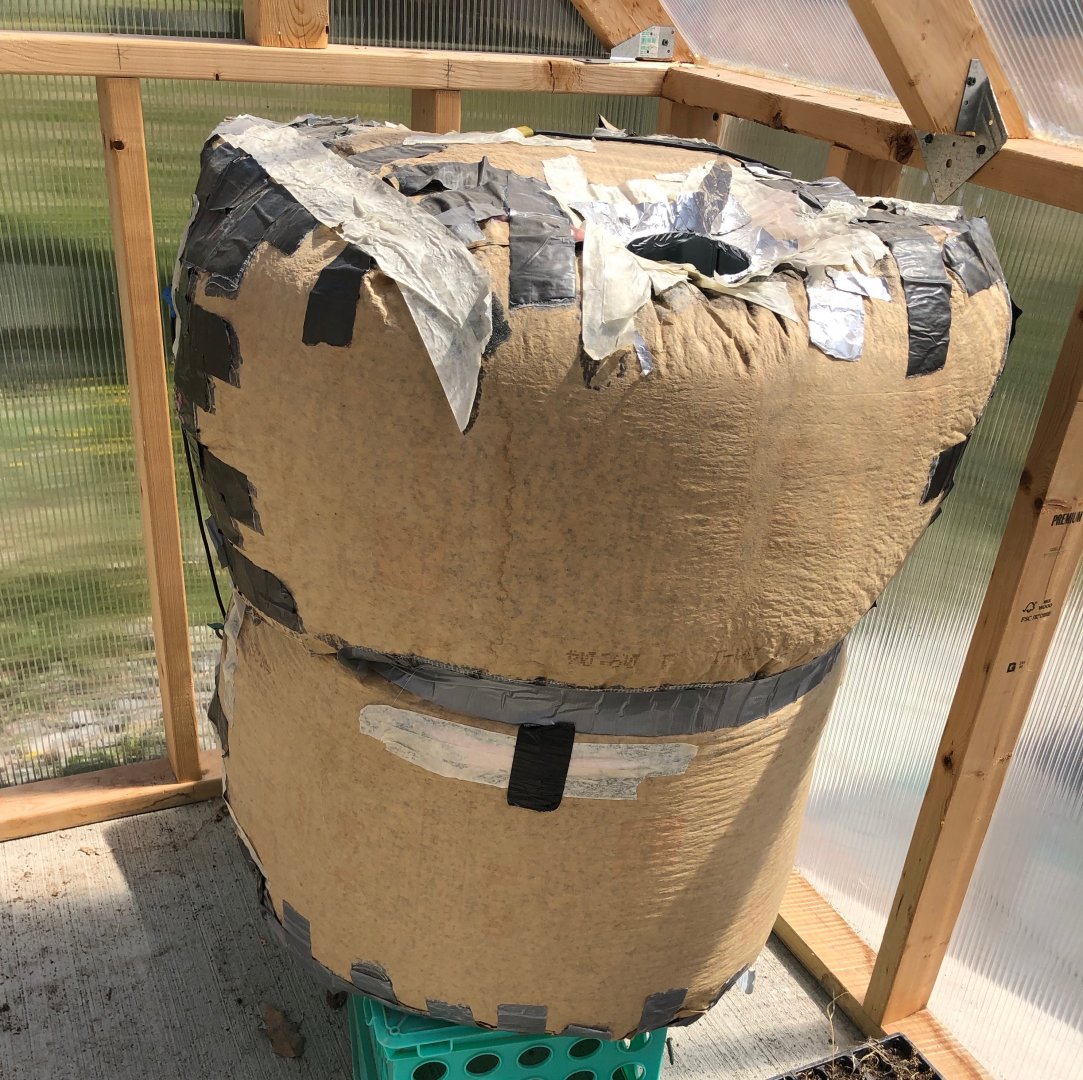
Heat capacitor
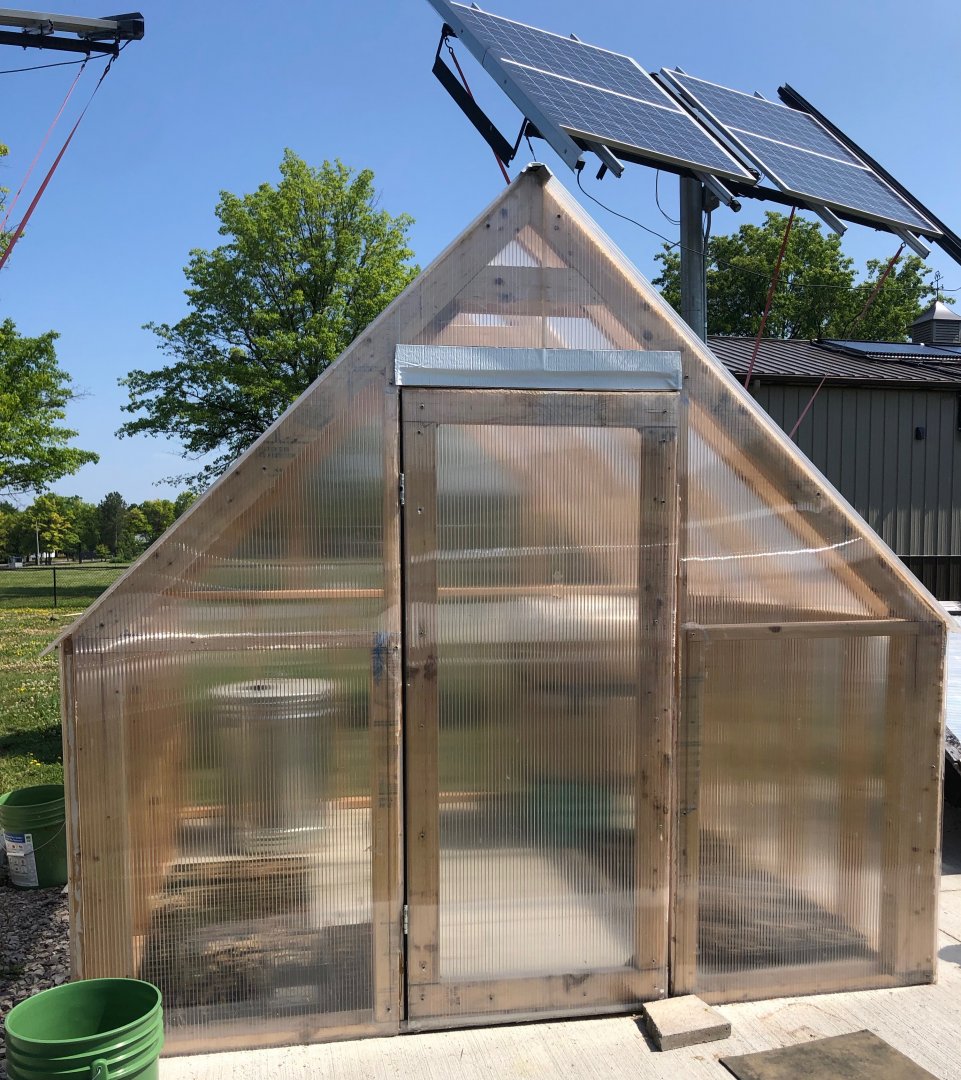
The greenhouse
The solar collectors and heat capacitor were one of the first projects when the eGarden was created. The solar collectors have a wooden frame and are full of crushed soda cans that have been painted black. The surface of each box is a layer of plastic, the same material that the greenhouse is made out of. These black boxes are heated up by the sun throughout the day, they are then connected with insulated dryer tubing to a metal garbage can that is also full of crushed cans and insulated with home insulation. This can, called the heat capacitor, sits inside the greenhouse and stores heat throughout the day as hot air from the solar collectors is pumped into it. Then, throughout the night as the air cools, heat from the capacitor can be pumped into the greenhouse to heat it up and maintain the temperature, thus extending the growing season. This greenhouse would be ideal for keeping plant starters comfortable as they are being raised to be planted and grown in the eGarden beds.
Solar Collector Timeline
2015: Building the Collectors
The first set of collectors were built in 2015 by several seniors working on the eGarden project. These collectors were built as a set of several different collectors to first determine which design would heat up the most in order to provide heat to the greenhouse.
The final design consisted of a wooden frame with hard plastic on each side, the frame was lined with black plastic to keep water out and filled with soda cans that were punctured with nails to allow air flow. The cans were all spray-painted black to encourage energy absorption.
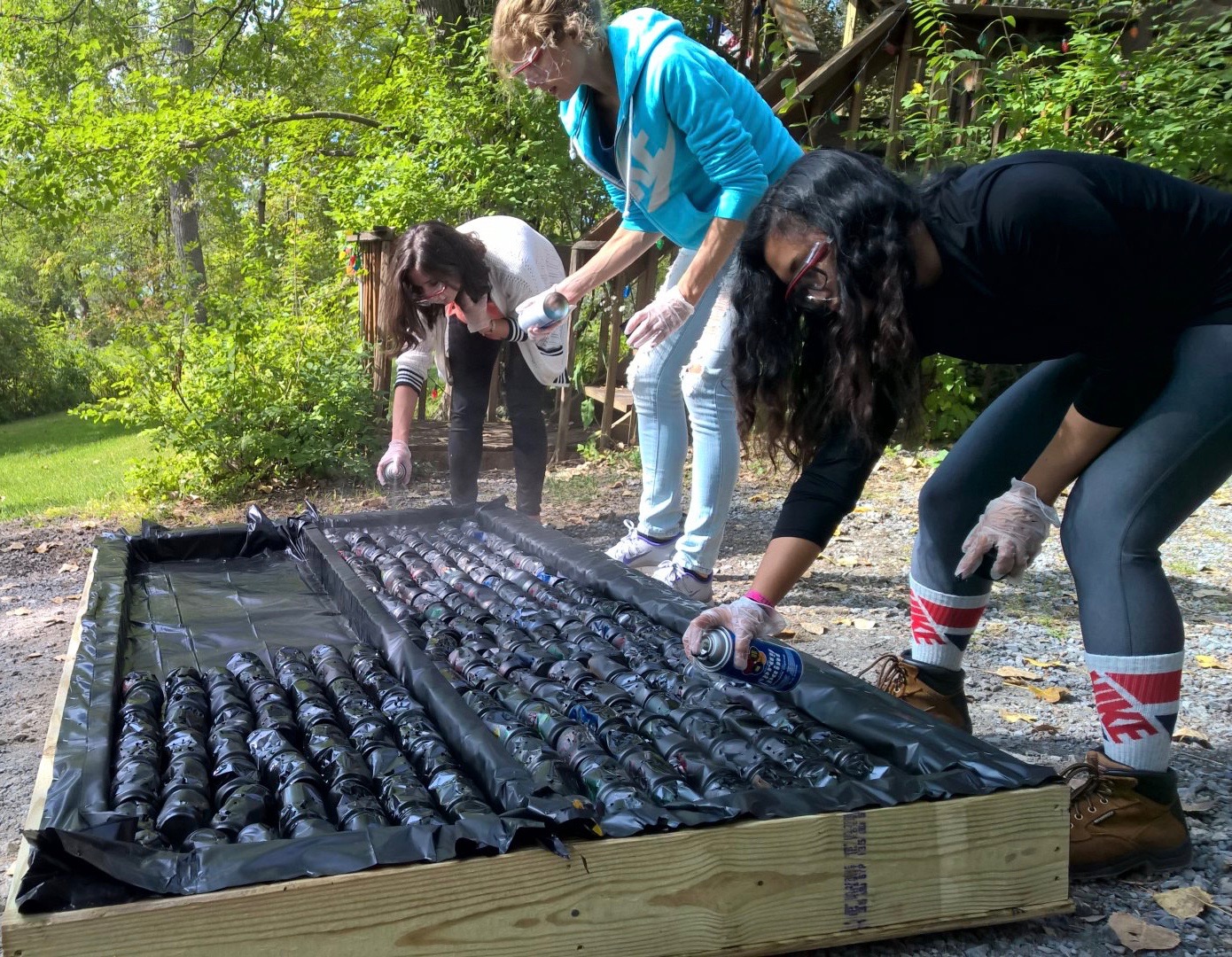
Painting the cans in the collector black.
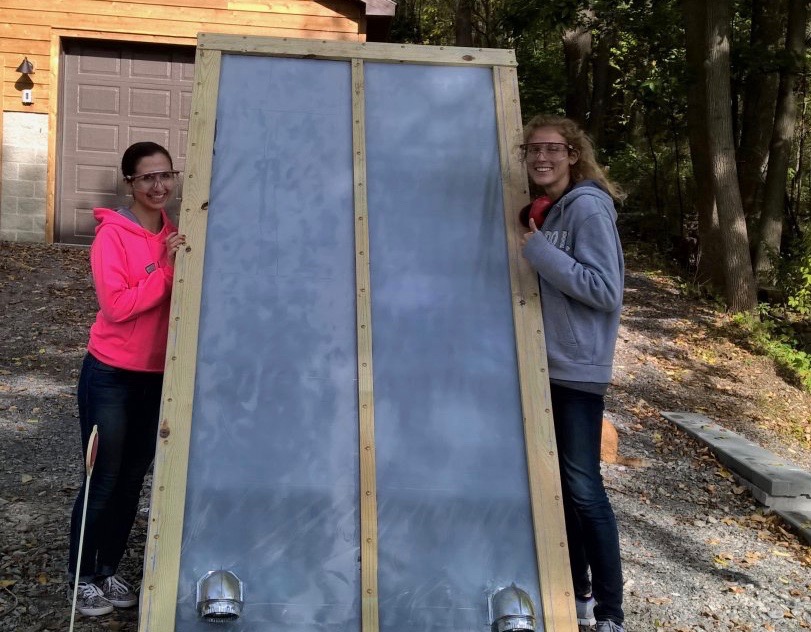
The complete collector.
2016: Putting them to work
Once the collectors were completed they were installed alongside a small greenhouse that was built to test their effectiveness. Storing this energy for later to keep the greenhouse warm at night seemed like the most effective use of its capabilities. So, a heat capacitor was built. This is a device that can be temporarily charged with heat, and then discharged when needed. The low cost solution was to pump the hot air from the collectors into a metal garbage can full of more aluminum cans. The heat from the capacitor can then be pumped into the greenhouse when it’s needed at night. Later generations of the capacitor added insulation to the outside to reduce the amount of heat lost to the environment.
Collectors installed next to greenhouse with capacitor inside.

2017: Data collection and testing efficiency
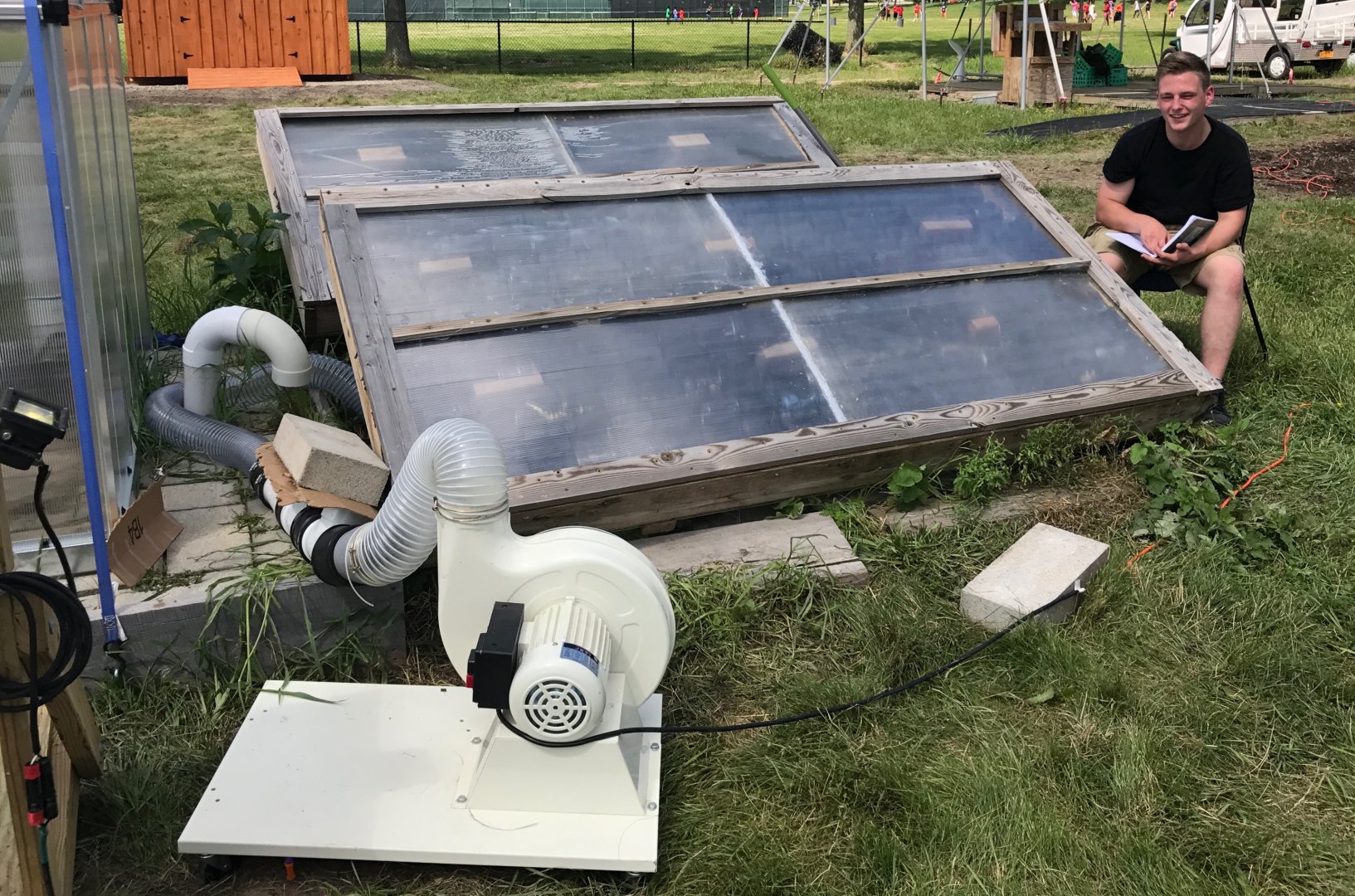
Taking data with the original collectors.
Once the set up had been created it was time to get some data to test how well this system worked.
The infrared image of the solar collector on the right side of the poster below demonstrates how heat flows through the two sides of the box, cold air flows into the bottom and then around and is pumped out into the heat capacitor through the top.
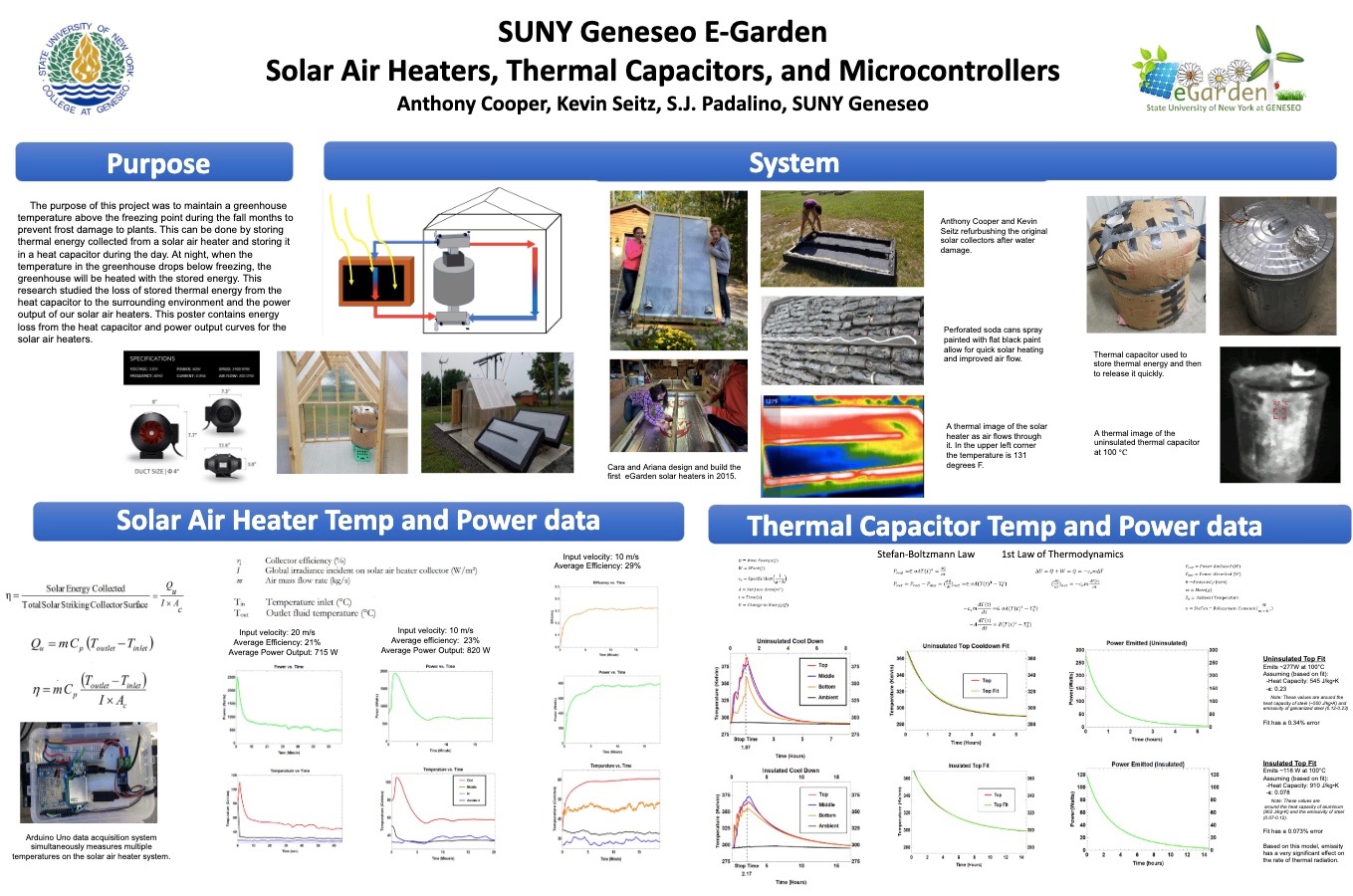
2018: Revamping the system
After the greenhouse had been destroyed twice by windstorms, the solar collectors were water damaged, and the weather station was blown apart, it was decided that it was time for a more permanent foundation for these projects. Facilities poured a concrete pad with some bolts for mounting the various projects, and a few students spent their summer rebuilding these devices and installing them in their permanent home.
A new, more sturdy greenhouse was built, and the solar collectors were updated with more waterproofing and some changes to improve their ability to collect heat. They were also permanently mounted on the new foundation.
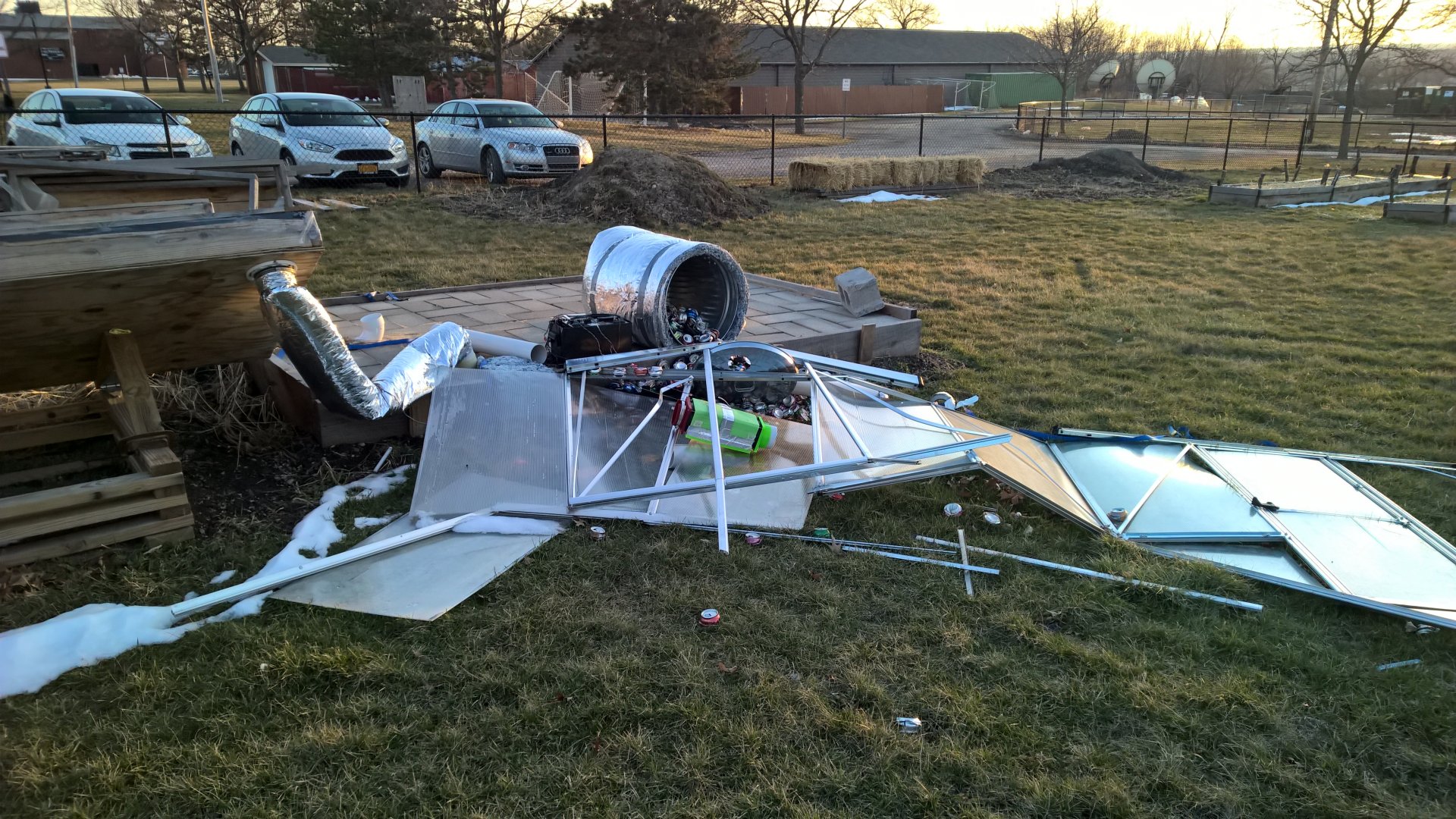
The original design post wind storm.
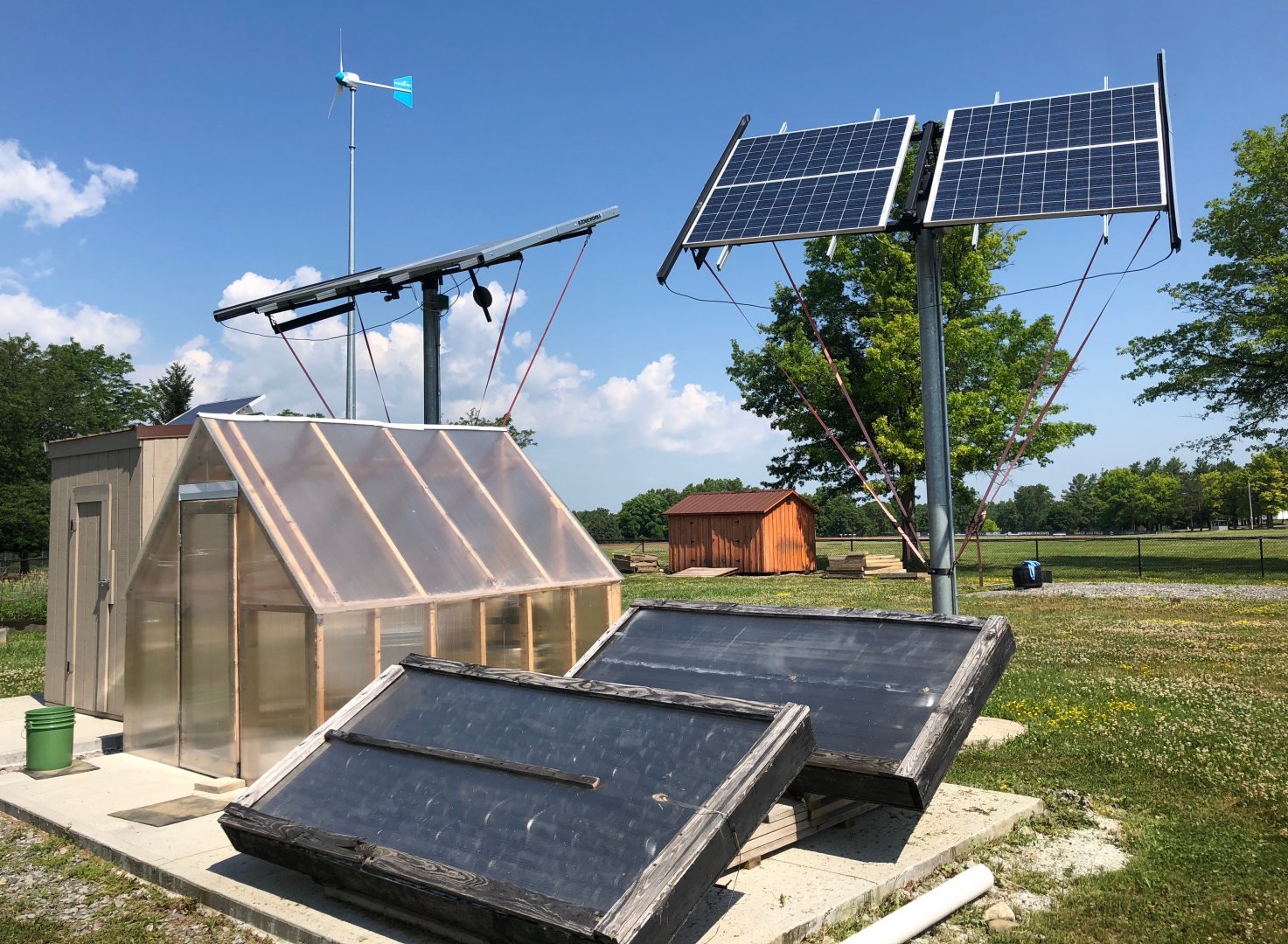
The repaired system in 2019.

Solar collectors

Heat capacitor

The greenhouse
The Power Shed
As of 2023, students cleared and cleaned out the intended “Power Shed” being used for storage at the time. The infrastructure of the shed was remodeled to house four 12V 7Ah AGM batteries as well as a Wind and Solar Hybrid Charge Controller. The Charge Controller draws and regulates the amperage and voltage taken from a small wind turbine adjacent to the shed and a small solar panel on the top of the shed which is then distributed to their respective loads. Excess power generated is also delivered to the battery system in order to maintain the state of the batteries and prevent the charger from becoming overcharged. The loads that were added include interior and exterior lights also mounted inside and outside the shed through the use of power buses.
With the addition of these changes, the shed is now an environment where students have the ability to renewably power electronics used to monitor the greenhouse and other projects.
